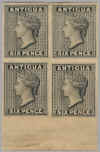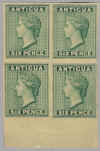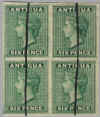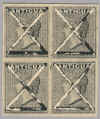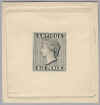
Die proof, in black, of completed master die on 48mm square piece of india paper die sunk onto larger card (55mm by 59mm).
Robson Lowe (see references) lists a die proof printed directly on card. This listing may be in error as the editor's collection included an example listed as printed on card that was actually a cut down version of india paper mounted on card.
